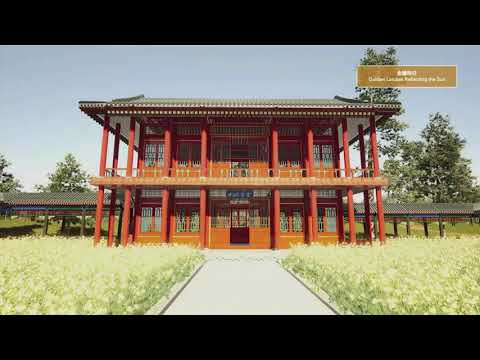 Speaker: Hedren Sum @hedren
Speaker: Hedren Sum @hedren
 Affiliation: University of Singapore
Affiliation: University of Singapore
 Co-authors: Stephen Whiteman
Co-authors: Stephen Whiteman
Title: Virtual Mountain Estate
Abstract: The proposed symposium presents the case studies that showcase and explore the ethnographic and experimental uses of narrative in Extended Reality (XR) as in reconstructing cultural landscape based on literature, building brands in affective ways, and exploring the migration of literary imaginaries through sound. The symposium addresses the role of epistemic and affective affordances of XR in creating and communicating new insight into narrative forms, whether in fiction or advertising. It seeks to provoke the discussion of how our approaches to each subject considered here could be transformed beyond the disciplinary boundaries.

 Long abstract
Long abstract
From Static Representation to Experimental Remediation This paper will reflect on the Virtual Mountain Estate (VME) project to address how 3D modelling and XR technologies can critically reconstruct cultural landscapes. Centred on the Qing imperial park-palace of Bishu shanzhuang 避暑山莊—the Mountain Estate to Escape the Summer Heat—around 1713, VME draws upon diverse sources: poems by the Kangxi emperor (r. 1661–1722) and their annotations, woodblock illustrations, architectural plans, archival research on interiors, and visual comparisons with contemporaneous landscapes. This range of historical evidence underpins reconstructions that combine more definitive interpretations with informed speculations (or “plausible fictions”) where documentation is lacking. Rooted in the concept of “X-Sheds,” or “experience-sheds,” the project extends the idea of a “viewshed” to encompass subjective, culturally mediated experiences. Three central “scenes,” or jing (景), drawn from the Kangxi emperor’s set of thirty-six describing the landscape of Bishu shanzhuang, form the core of this exploration. Each jing merges sensory perception, poetic reflection, and emotional engagement, offering a window into premodern Chinese landscape appreciation. Short textual introductions and poems describe the physical settings alongside Kangxi’s personal responses, while woodblock illustrations serve as early forms of remediation and virtualisation. By moving beyond simple description and narration, VME employs iterative 3D modelling to integrate sensory, spatial, and atmospheric cues—lighting, soundscapes, and vantage points—into a dynamic, immersive environment. Users can navigate a VR interface, actively shaping their interpretive engagement with each scene. This method foregrounds the subjective and ephemeral qualities of historical landscapes, emphasising multivalence rather than any definitive reconstruction. The paper will discuss the methodologies, processes, challenges and implications of this critical historical reconstruction, highlighting how XR-based tools can expand our interpretation and understanding of cultural heritage. Ultimately, the VME demonstrates the potential of collaborative and participatory interpretations that unite empirical evidence with subjective and imaginative possibilities.

